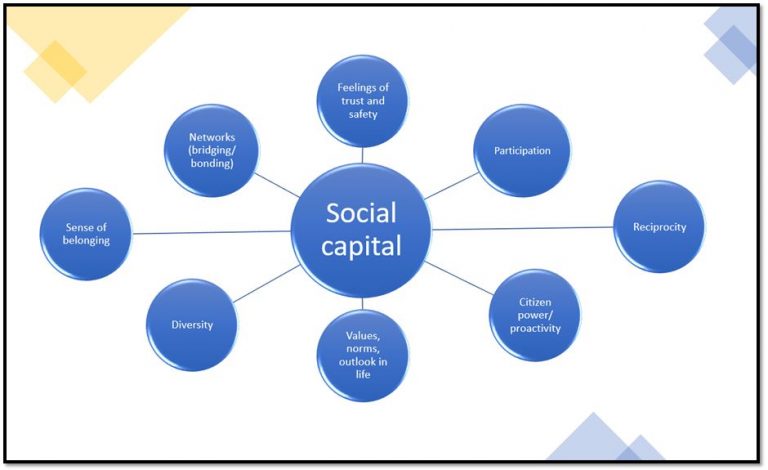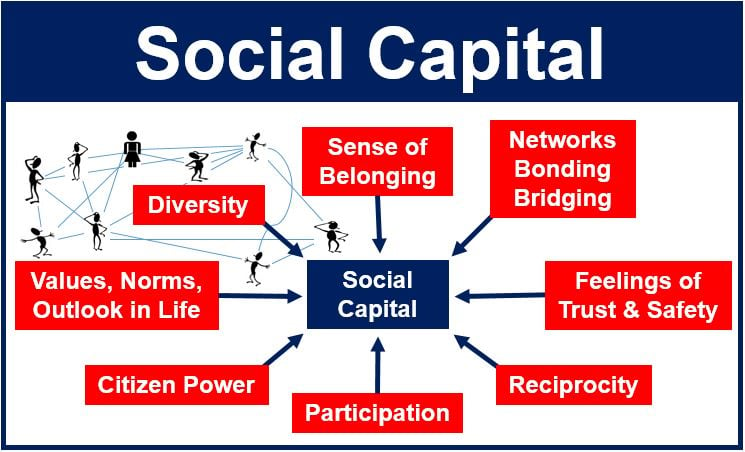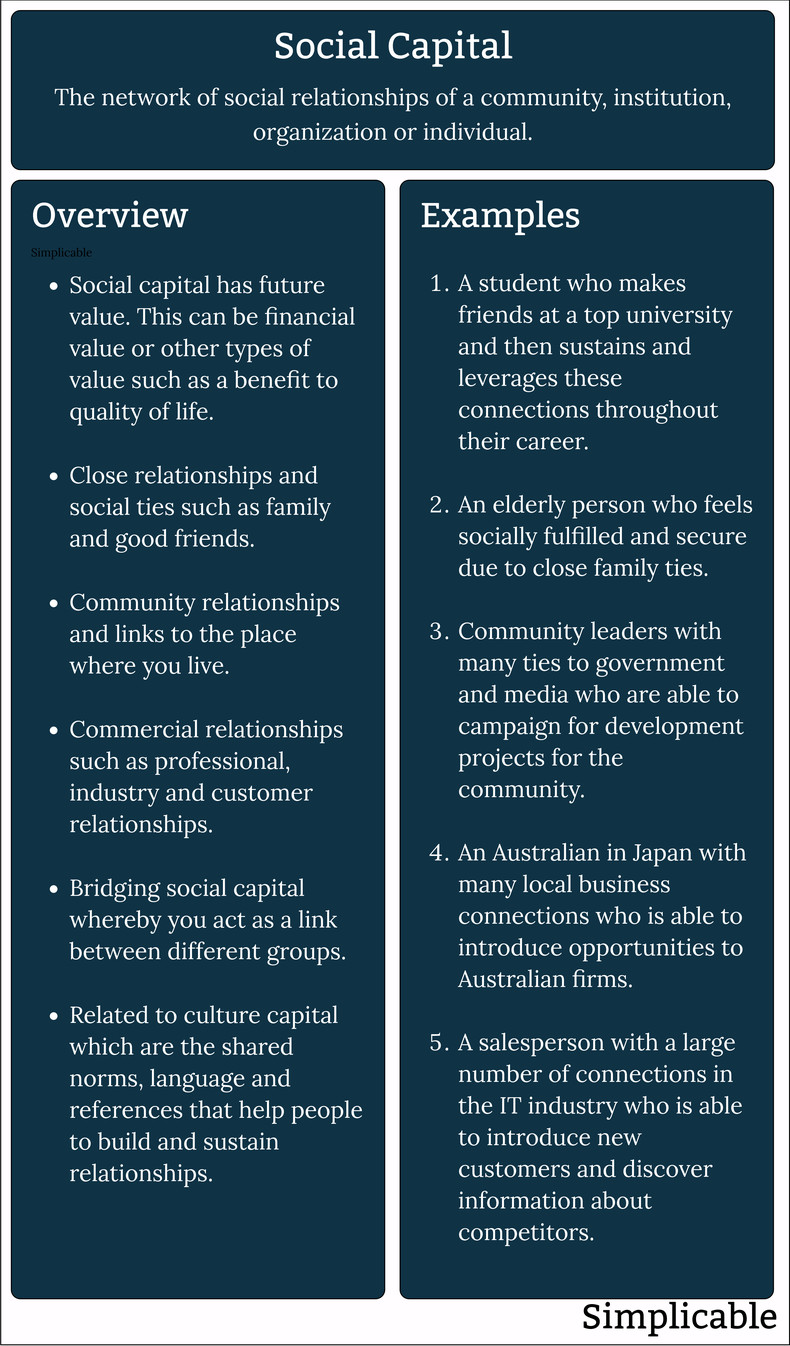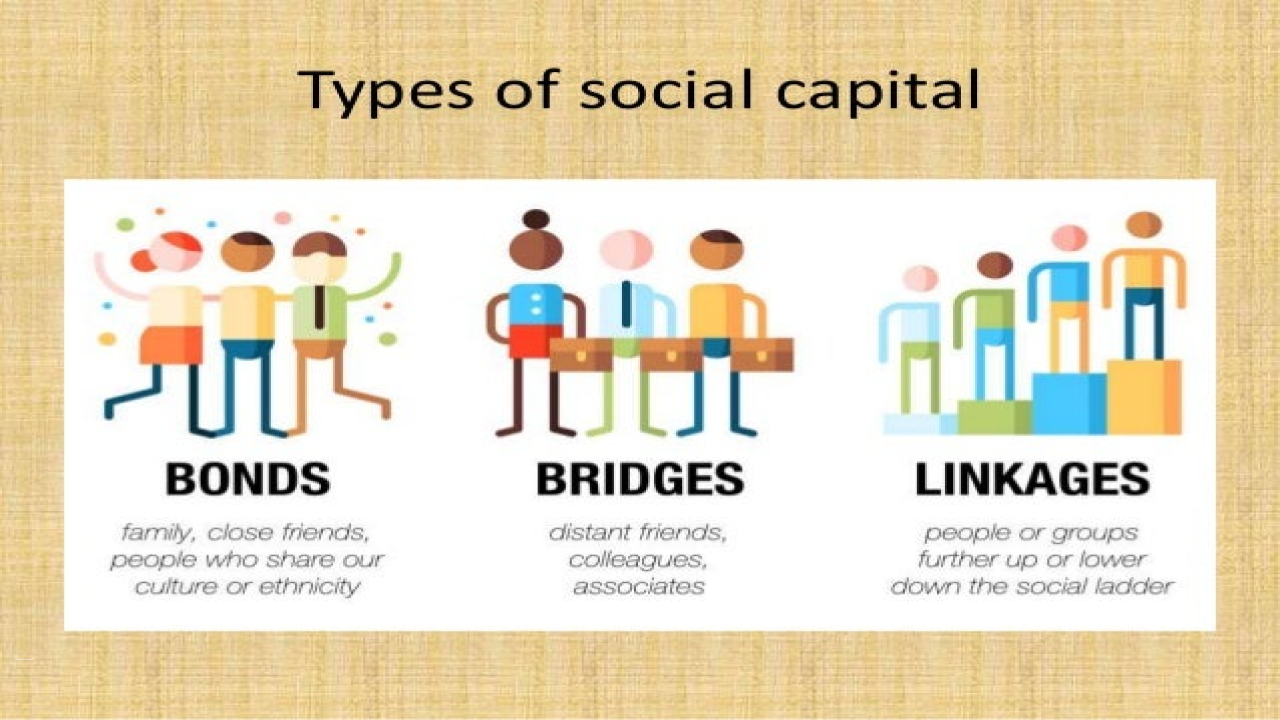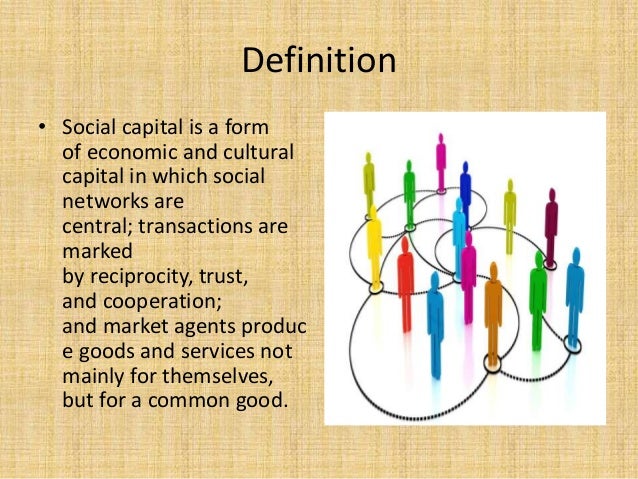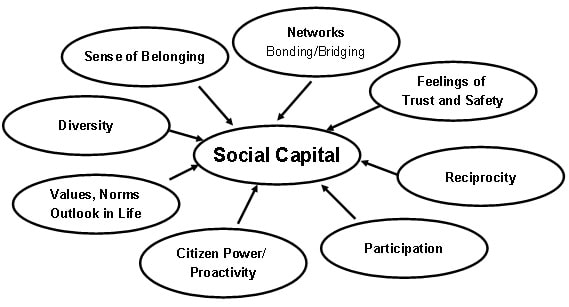Which Of The Following Is An Example Of Social Capital

In today’s increasingly interconnected world, understanding social capital is more critical than ever. A growing debate centers around what truly constitutes this valuable resource, impacting everything from individual opportunities to community resilience.
This article cuts through the noise, providing a clear example of social capital in action and highlighting its real-world implications. We examine a scenario to distinguish social capital from other forms of capital.
Understanding Social Capital: Beyond Simple Definitions
Social capital refers to the networks of relationships among people who live and work in a particular society, enabling that society to function effectively. It's about who you know and what those connections can do for you and the broader community.
It's not just about having friends; it’s about the resources, trust, and mutual support that flow through those relationships. This distinguishes it from mere social connections.
Consider this scenario: Maria, a recent immigrant to the United States, is struggling to find a job. She knows very few people and feels isolated. Her neighbor, Mrs. Rodriguez, who has lived in the community for many years, notices Maria's distress.
The Example: Mrs. Rodriguez and Her Network
Mrs. Rodriguez, with her extensive social network, represents a clear example of social capital. She knows several local business owners and community leaders.
She learns about Maria's skills and experience and immediately thinks of a local bakery that is looking for a baker. Mrs. Rodriguez personally introduces Maria to the bakery owner, vouching for her character and work ethic.
Because of Mrs. Rodriguez’s recommendation and the trust the bakery owner places in her, Maria gets an interview and subsequently lands the job. This is social capital at work.
Why This is Social Capital and Not Something Else
This situation illustrates several key aspects of social capital. First, it’s the relationship between Mrs. Rodriguez and the bakery owner. This relationship allows access to information and opportunities that Maria couldn't access on her own.
Second, there is an element of trust involved. The bakery owner trusts Mrs. Rodriguez’s judgment, making them more likely to hire Maria based on her recommendation.
Third, there's a sense of reciprocity. Mrs. Rodriguez's actions strengthen community bonds and encourage others to help each other, fostering a cycle of mutual support.
Distinguishing Social Capital from Other Capitals
It's crucial to differentiate social capital from other forms of capital, such as human capital (skills and knowledge) and financial capital (money and assets). Maria's skills are her human capital.
However, without Mrs. Rodriguez’s social capital, Maria's human capital might not have been sufficient to secure the job. Mrs. Rodriguez's social capital bridges the gap between Maria’s potential and opportunity.
Financial capital could have helped Maria through job training or relocation, but the direct connection and the trust element provided by Mrs. Rodriguez's social capital were invaluable.
The Broader Implications
The example of Mrs. Rodriguez and Maria demonstrates the power of social capital in facilitating upward mobility and community cohesion. This extends beyond individual stories.
Communities with strong social capital networks are more resilient during times of crisis. They recover faster from economic downturns and have lower crime rates.
Furthermore, social capital promotes civic engagement and strengthens democratic institutions. People are more likely to participate in local governance when they feel connected to their community.
Ongoing Developments and Next Steps
Researchers and policymakers are increasingly focused on ways to build and strengthen social capital within communities. Initiatives range from community-building programs to policies that promote social inclusion.
Organizations like the Social Capital Project are actively researching and advocating for policies that foster stronger social bonds. Understanding social capital is vital for creating more equitable and resilient societies.
Efforts continue to identify best practices for building trust and reciprocity within diverse communities, ensuring that the benefits of social capital are widely shared. The story of Mrs. Rodriguez and Maria serves as a powerful reminder of the transformative potential of human connection.

